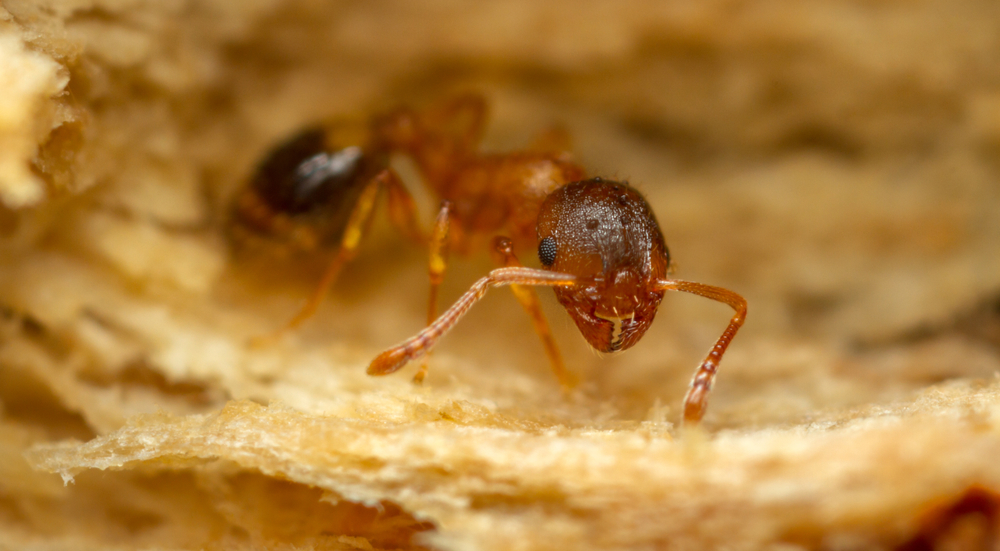
[ad_1]

Temnothorax nylanderi is a low-key species of ant found mostly in Europe, where it builds nests in tree bark and rotting branches and other woody, secluded places. This tiny brown arthropod leads a quiet life, preferring shade and shelter and staying out of the way of the woodpecker’s bill.
But for all this quiet, T. nylanderi faces a strange, alien threat in the form of a parasite that turns its members into yellowed, sedentary oafs. These compromised individuals hang out in the nest, not doing much of anything, defying what it means to be an ant.
The Ant and the Parasite
How does this happen? A new paper posted to the bioRxiv preprint server concludes that the parasites flood the ants with new proteins that appear to change how their bodies function. Most notably, the proteins extend the ants’ lives by several fold (an exact figure has yet to be determined). The infected may even live as long as queens, which can last 20 years.
Read More: How Army Ants Build City-Like Nests Using Their Own Bodies
Like most parasites, Anomotaenia brevis has a vested interest in keeping the host alive and in relative health so the parasite can carry out its normal life cycle and produce eggs for the next generation. In this case, that means keeping the ants alive long enough to be eaten by a woodpecker, a process that the parasite appears to facilitate. Infected ants are less likely to flee when the bird finally comes, making them easy prey.
Once inside a woodpecker, the A. brevis larvae grow into tapeworms, their full adult form.
How Does the Parasite Infect Ant Colonies?
T. nylanderi colonies unwittingly infect themselves when their members bring egg-infected woodpecker poop back to the nest as a food source. After ant larvae eat it, the eggs hatch inside them, into larvae that burrow through their guts and into their haemolymph, or insect blood.
As adults, the infected ants’ exoskeletons grow soft and yellow as they become listless and sap the brood’s resources. The other ants in the colony make the situation worse as they feed and groom the infected, which strains the community to the point of shortening the other ants’ life expectancy.
“One might argue that on an individual level, an infection is beneficial,” the paper says. “However, the colony as a whole suffers.”
What Did the New Study Find?
For the new study, researchers found several T. nylanderi colonies in a German forest and transported them to a lab and supplied them with a mixture of water and honey.
When the researchers sampled the infected hemolymph, they found two antioxidants produced by the parasites that seemed to be helping to keep the host alive for years on end. The ants’ bodies swirled with proteins produced by the larvae – they accounted for 7 percent of those found in the hemolymph. The cocktail largely defied categorization as researchers could only pin down the identity of one of the 15 most prominent proteins, an antioxidant molecule.
The researchers also searched for proteins that played a role in suppressing the ants’ immune system, which seemed to be passing over the larvae. They found a protein that seemed to play a role in cloaking the larvae so the ants’ immune systems regarded them as benign.
What Caused the Ants to Give Up Working?
The study found more surprises when it looked at the ants’ own proteins, which something had altered, be it the parasite’s influence or a natural process within the ants. A molecule that promotes brood care and nesting behavior was up to 18 times higher in infected ants vs. the uninfected.
“A higher abundance of this protein might explain the preference of infected individuals to stay close to the brood, although they exhibit little brood care behavior,” the paper says.
A 2019 study found that the infected ants will also quickly develop ovaries if the queen is removed from their colony.
Read More: They’re Ants That Collect Skulls. Now We Know How And Why.
[ad_2]